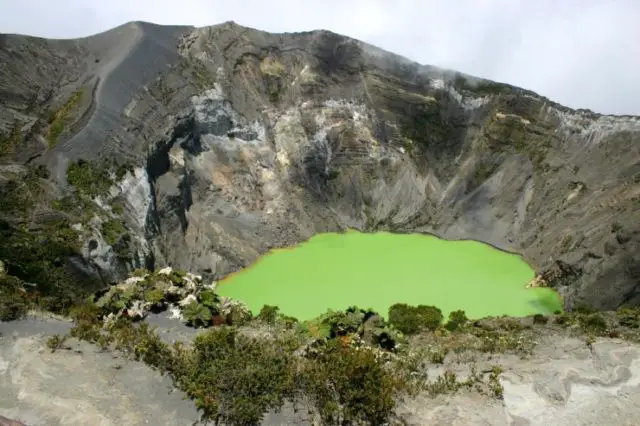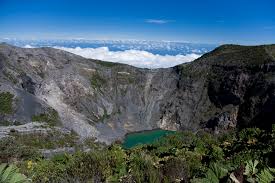
The Irazu volcano is a derivative of the indigenous language population that inhabited that area in the past and means hill of trembling and thunder, this because this colossus has experienced several eruptions in its history.
The top of the Irazú volcano
Cartago is always a good destination to get away from the hustle and bustle of the city and if you want a little hiking you can head towards one of the colossi that are located in this province specifically head to the Irazú National Park.
You can leave the center of San José downtown and travel about 51 km, it is a trip that takes approximately an hour and a half.
The majesty of the Irazú Volcano.
If the day is sunny, it is usually normal for it to be quite cold at the top (5 to 10C), so ideally you should wear warm clothes.

The Irazú volcano is the highest in the country, it is 3432 meters above sea level and has 5 craters, where the main one is 1.5 km in diameter and 300m high.
Due to its height and position in the central Volcanic Cordilla, it is a strategic point for the country’s telecommunications, so you can see where there is an area with antennas for this purpose.
It is vigorous to walk the entire path of the Irazú volcano through the edge of its craters protected by safety rails that should not be crossed.
We give you a recommendation that the day you go to visit the Irazú volcano you arrive early so that you can visit it at ease.
So you can also admire its main crater, the lake that forms in the background with spectacular shades of yellow or litmus green.
Also, the crater of Playa Hermosa and the Diego de la Haya, as well as the Sapper formation, which is the highest point of the massif and since the Caribbean and Pacific Coasts can be seen on a clear day.
As for visitor services, you can enjoy information services, park rangers, trails, sanitary services, cafes, and various natural viewpoints.
Irazú Volcano Activity
Historically, the Irazú volcano in 1723 was its first major recorded eruption and destroyed the city of Cartago when it was the capital of Costa Rica, but the ash also covered much of San José.
It is worth mentioning that this activity was documented by Diego de la Haya, for this reason, one of its craters bears his name.
Another eruption of the Irazú volcano and one of the most remembered was the one in 1963. This occurred when former President John F. Kennedy was visiting the country.
This occurs due to an accumulation of volcanic materials in the bed of the Reventado river, which produces an avalanche that destroys around 300 houses in the city of Taras in Cartago.
In 1994 an explosion occurs in the north wall of the main crater producing an avalanche that slides towards the cause of the dirty river reaching beyond the bridge over the same river.
Since then the Irazú volcano has turned the area into a privileged place for agriculture since its soils are very fertile.
Here you will find many farms dedicated to the cultivation of strawberries, potatoes, onions, exotic flowers, and dairy.
Flora and fauna.
Protects almost 25 km2 preserving a large number of species, animals, and plants of interest.
Its vegetation is a spectacle, it is like being on the moon, it is arid with the naked eye, umbrellas of poor and tall pines.
To finish, being surrounded by all the charm that the Irazú volcano has is worth visiting and knowing each of its little corners.

